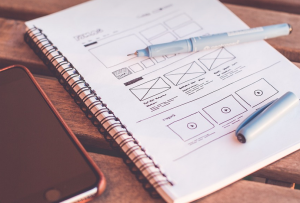
Starting with the Basics
Welcome to the exhilarating world of programming, where you get to build your own digital creations! This journey, however, doesn’t begin with some fancy tech jargon. It starts with understanding the fundamental logic that drives all coding magic.
Think of programming as a puzzle. You have a bunch of pieces – these are commands or variables – and you need to put them together in a specific order to create something amazing, like a website, an app, or even a simple game. This is where the art of logic comes in.
Logic governs the flow of your program, dictating how it reacts to different inputs and executes its instructions. It’s the engine that makes things happen!
Deconstructing Programming Logic
To truly grasp programming logic, let’s break down this fascinating topic into manageable chunks.
**1. The Flow of Execution: If-Else Statements:** Imagine you have a set of rules to follow. In programming, these rules are translated into “if-else” statements. They decide what happens based on conditions.
If the answer to a question is ‘yes’, then do something specific, like printing “Hello World!” to your screen.
Conversely, if the answer is ‘no’, then execute another action – perhaps ask for more information from the user.
**2. Loops: Repeating Tasks:** You might need to repeat actions multiple times, like filling out a form or playing a song repeatedly. Here’s where loops come in handy!
Think of it as your program saying “Do this action over and over again until you reach the end!” Loops help automate tasks and make things run smoothly.
**3. Functions: Modular Coding:** Sometimes, a task might require a lot of steps, like calculating a complicated equation or analyzing data. Instead of writing lengthy code, break it down into smaller chunks – our programming toolkit! These are functions.
A function acts like an instruction manual for your program, encapsulating the specific logic needed to complete a task. This makes your code cleaner and easier to maintain!
The Importance of Design
But programming logic isn’t just about writing code – it’s also about crafting the perfect design.
**1. Clear Structure and Documentation:** Just like a well-organized room, your program needs good structure! Use comments to explain what each piece of code does or why you wrote it that way.
**2. Thinking Like the User:** How would people use your program? Make sure the interface is intuitive and user-friendly.
**3. Testing and Debugging: The Secret Sauce:** Don’t let a bug slow you down! Regular testing helps identify errors, ensuring your program runs smoothly
**Finding the Right Learning Resources**
So, how can you learn more about this fascinating world of programming logic and design? There’s a wealth of resources available:
- Online courses: Platforms like Udemy or Coursera offer comprehensive courses on programming fundamentals (search for “programming logic” or “design”).
- Interactive tutorials: Websites like Codecademy or Khan Academy provide hands-on learning experiences through interactive exercises and challenges.
- Books: Classic books like “Code Complete” or “Head First Design Patterns” can offer deeper insights into the world of design.
Remember, learning to code is a journey. Take your time, experiment with different tools and languages, and most importantly, have fun!



